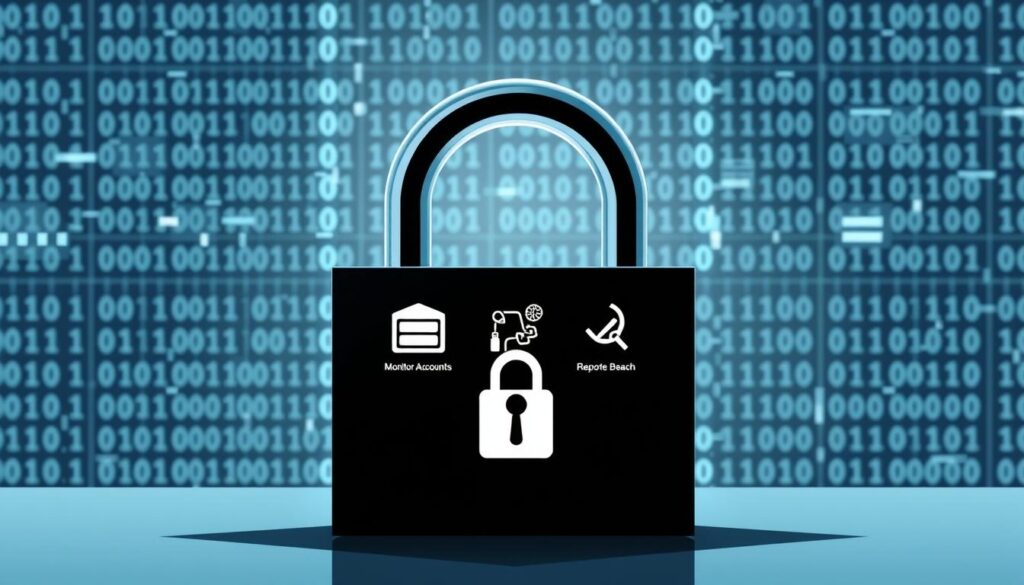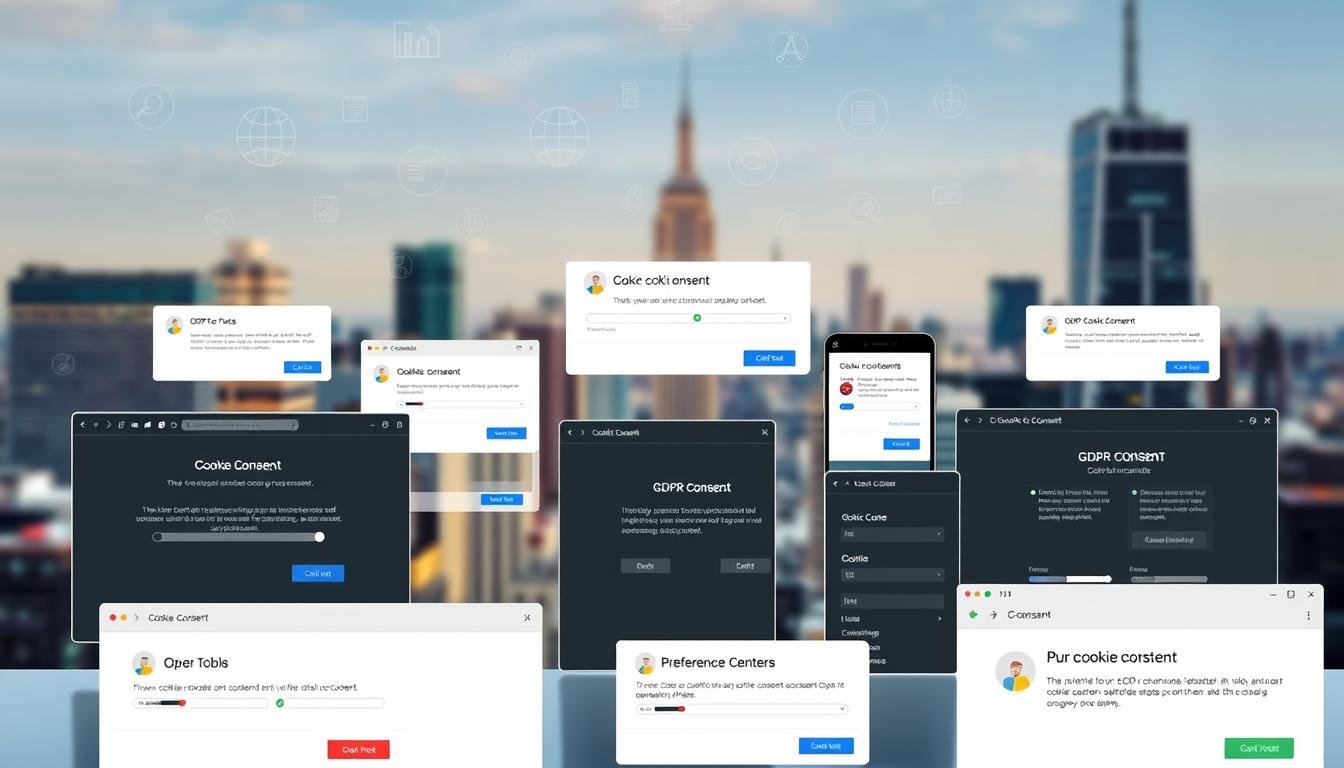Have you ever wondered how much your online activity is truly protected? With cyber threats rising, safeguarding personal data has never been more critical. A recent IBM report revealed that the average cost of a breach hit $4.45 million in 2023—proof that weak security measures come with a hefty price.
Businesses and individuals alike must prioritize data protection to avoid financial and reputational damage. Regulations like GDPR and CCPA set strict standards, but staying compliant is just the first step. Strong cybersecurity practices build trust and prevent unauthorized access to sensitive information.
As digital transactions grow, so do risks. Understanding these threats helps you stay one step ahead. Let’s explore why securing your online footprint matters now more than ever.
Key Takeaways
- The average cost of a data breach reached $4.45 million in 2023.
- Strong security measures prevent financial and reputational damage.
- Regulations like GDPR and CCPA enforce strict privacy standards.
- Both businesses and individuals must prioritize protecting personal data.
- Cybersecurity practices build consumer trust and reduce risks.
What Is Data Privacy and Why Does It Matter?
Protecting sensitive details online is no longer optional—it’s essential. Every click, purchase, or sign-up exposes information that could be misused. Understanding what’s at stake helps you take control.
Defining Data Privacy in the Digital Age
Personally identifiable information (PII) includes details like Social Security numbers, addresses, and biometrics. Personal health information (PHI), such as medical records, requires even stricter safeguards. These categories help distinguish what needs protection.
Businesses and individuals share responsibility. Companies must secure what organizations collect, while users should limit oversharing. For example, posting vacation plans on social media can invite physical theft.
The Consequences of Poor Data Privacy Practices
Neglecting safeguards has real costs. In 2022, Epic Games paid $275 million for violating COPPA by collecting kids’ PII without consent. The Cambridge Analytica scandal showed how leaked details can manipulate elections.
Global regulations reflect the stakes. The UN declares privacy a human right, while GDPR fines reach 4% of a company’s global revenue. Reputation damage often outweighs financial penalties—once trust is lost, rebuilding it takes years.
Core Principles of Data Privacy
Fair practices ensure transparency and control over personal details. The NIST Privacy Framework outlines seven core rules to safeguard information. These include accountability, purpose limitation, and user participation.
Access and Transparency
Role-based access control limits who can view sensitive details in companies. For example, HR staff access payroll records, while marketing teams don’t. Clear policies prevent misuse and align with GDPR’s “right to access” rule.
Consent and User Control
Opt-in models require active permission before collecting details. Opt-out systems assume consent unless users object. California’s CCPA lets residents delete their data—a win for data protection.
Data Minimization and Retention Limits
Healthcare keeps records for 7 years, while retail may store purchase history for 2. The key? Only collect what’s needed. Shorter retention reduces risks for organizations and users alike.
Together, these principles form the backbone of modern data privacy efforts. They balance innovation with individual rights in our connected world.
Data Privacy vs. Data Security: Key Differences
A firewall won’t stop oversharing, and privacy settings can’t block hackers—here’s why. Though linked, data privacy and data security address different risks. Privacy governs who accesses information, while security prevents breaches.
IBM defines privacy as ensuring the “right people” see your details, whereas security blocks unauthorized access. For example, social media privacy settings let you control audience visibility, but encryption protocols protect messages from interception.
Five core differences stand out:
- Goals: Privacy focuses on consent and transparency; security thwarts cyberattacks.
- Controls: Privacy uses policies like GDPR; security deploys firewalls and IAM tools.
- Accountability: Legal teams drive privacy compliance; IT enforces security measures.
Security enables privacy. Identity-access management (IAM) tools limit internal exposure, while data protection solutions like DLP flag leaks. A hospital complying with HIPAA, for instance, encrypts patient records (security) and trains staff on disclosure rules (privacy).
Cross-department collaboration is vital. Legal teams interpret regulations, while IT implements safeguards. Together, they create a robust defense against both misuse and breaches.
How Organizations Protect Your Data
Modern businesses deploy advanced tools to shield sensitive details from cyber threats. From financial records to customer profiles, layered defenses ensure data protection at every level. Here’s how enterprises stay ahead of risks.
Data Loss Prevention (DLP) Tools
DLP systems scan networks to identify, classify, and monitor critical information. Solutions like IBM Guardium track files in real-time, alerting teams to unusual transfers. Implementation follows three phases:
- Discovery: Locate sensitive details across cloud and on-premise storage.
- Classification: Tag files by risk level (e.g., public, confidential).
- Monitoring: Block unauthorized sharing via email or USB drives.
Encryption and Access Controls
AES-256 encryption scrambles information into unreadable code without a unique key. Banks use this standard to secure transactions. Pair it with access control like multi-factor authentication (MFA) for defense-in-depth.
For example, a financial institution might combine MFA with single sign-on (SSO) to streamline logins while maintaining data security. Zero-trust architectures further verify every access request, even from internal users.
Privacy by Design Frameworks
Proactive measures embed safeguards into systems from the start. NIST’s framework emphasizes risk assessments, while ISO 27701 certifies compliance with global standards. Cloudian HyperStore uses immutable storage to prevent tampering—a key feature for data protection.
These strategies reduce breaches by design, not just reaction. As threats evolve, so do the tools to stop them.
Major Data Privacy Laws in the U.S. and Beyond
Global regulations shape how companies handle sensitive details across borders. While standards vary, general data protection principles anchor most frameworks. Here’s how key laws compare—and why compliance matters.
GDPR and Its Global Influence
The European Union’s GDPR affects businesses worldwide. If a company serves EU citizens, it must follow strict rules—even without a physical presence there. Fines reach €20 million or 4% of global revenue, whichever is higher.
U.S. firms like Meta have faced penalties for non-compliance. GDPR also inspired Brazil’s LGPD and South Africa’s POPIA, proving its ripple effect.
HIPAA, COPPA, and Sector-Specific Regulations
Healthcare and child-focused industries face unique rules. HIPAA mandates safeguards for patient records, while COPPA requires parental consent to collect kids’ data under 13.
Schools and apps like YouTube use age gates to comply. Violations carry heavy fines—TikTok paid $5.7 million for COPPA breaches in 2019.
State-Level Laws: CCPA and VCDPA
California’s CCPA lets residents opt out of data sales. Its update, CPRA, adds stricter enforcement. Virginia’s VCDPA mirrors GDPR but exempts small businesses.
Colorado’s privacy law stands out with universal opt-out tools. By 2024, 13 states will have similar rules, creating a complex patchwork.
These laws prove general data protection isn’t one-size-fits-all. Staying informed prevents costly missteps.
Common Data Privacy Challenges
Navigating online platforms often feels like walking through a minefield of hidden risks. From social media oversharing to sophisticated scams, users face constant threats to their digital safety. Understanding these pitfalls is the first step toward better protection.
Social Media’s Hidden Traps
Facebook’s default settings automatically share profile details with third parties, including advertisers and app developers. LifeLock reports that 1 in 4 identity theft cases originate from social media leaks—often involving social security numbers shared in private messages.
Cookie consent banners frequently use dark patterns. Pre-checked boxes and confusing wording trick users into allowing unwanted tracking. The European Data Protection Board fined Meta €390 million for these deceptive practices in 2023.
Vendor Vulnerabilities
The 2023 T-Mobile breach exposed 37 million accounts through a vendor’s weak API security. Supply chain attacks now account for 62% of system intrusions, per Verizon’s DBIR. Companies must vet third parties as rigorously as their own systems.
Evolving Scam Tactics
Phishing remains the top attack vector, with 36% of breaches involving stolen credentials. Criminals bypass multi-factor authentication via SIM-swapping—convincing carriers to port numbers to attacker-controlled devices.
Verizon found 74% of social engineering attacks combine email and phone calls. Fraudsters impersonate IT staff to harvest login details, proving that human error often undermines technical safeguards.
12 Essential Data Protection Technologies
The right tools can mean the difference between secure systems and costly leaks. From identifying sensitive details to blocking ransomware, these solutions form a robust defense.
Data Discovery and Classification
Tools like Splunk and IBM Guardium scan networks to locate critical files. They tag information by risk level—public, internal, or restricted. Automated classification ensures compliance with regulations like GDPR.
Role-based access controls limit who can view classified details. For example, HR teams see payroll records, while marketing accesses customer demographics. This reduces insider threats.
Firewalls and Endpoint Protection
Next-gen firewalls use AI to detect zero-day exploits. Palo Alto Networks’ systems analyze traffic patterns to block phishing attempts. Endpoint tools like CrowdStrike halt malware before it spreads.
Gartner’s AI TRiSM framework recommends these for data security. Combined with multi-factor authentication, they create a strong barrier against breaches.
Immutable Storage and Disaster Recovery
Immutable backups prevent ransomware from altering files. Providers like Veeam offer write-once storage, ensuring clean recovery points. DRaaS (Disaster Recovery as a Service) minimizes downtime during attacks.
IBM X-Force reports that immutable systems reduce breach costs by 40%. Pair them with CASB solutions for cloud data protection.
Best Practices for Personal Data Privacy
Small daily habits create the strongest defense against online threats. From passwords to browsing choices, proactive measures reduce risks significantly. Tools like LifeLock’s Privacy Monitor add extra layers of protection by scanning for exposed personal details.
Strong Passwords and Multi-Factor Authentication
Password managers like 1Password generate and store complex credentials securely. Avoid reuse—60% of breaches exploit recycled passwords. Pair them with multi-factor authentication (MFA) via apps like Authy for critical accounts.
Limiting Social Media Exposure
Turn off location tags and scrub EXIF data from photos before posting. Audit friend lists quarterly—fake profiles often harvest details. Facebook’s “Off-Facebook Activity” tool lets you disconnect unwanted social media tracking.
Secure Wi-Fi and Browser Habits
Public networks demand VPNs with AES-256 encryption—NordVPN and ProtonVPN are top picks. Browser extensions like uBlock Origin block trackers, while HTTPS Everywhere forces secure connections. For physical access risks, cross-cut shredders destroy sensitive documents effectively.
These best practices form a foundation for safer digital interactions. Consistency matters more than complexity when safeguarding personal information.
The Role of Artificial Intelligence in Data Privacy
Artificial intelligence is reshaping how we safeguard digital identities. While AI tools detect threats faster, they also introduce new vulnerabilities. Striking this balance defines modern data privacy efforts.
Risks of Generative AI and Data Leaks
Samsung’s ChatGPT incident revealed how employees accidentally shared proprietary code via AI chatbots. Large language models (LLMs) ingest training details, sometimes retaining sensitive information like addresses or medical terms.
A healthcare AI study showed models could re-identify anonymized records with 85% accuracy. Attackers exploit patterns in datasets, bypassing traditional redaction methods.
AI-Driven Privacy Solutions
Tools like IBM Watson Privacy Advisor use machine learning to flag compliance gaps. Differential privacy adds “noise” to datasets, masking individual details while preserving analytics.
The EU AI Act mandates transparency for high-risk systems. Firms must document training sources and implement bias checks—key steps for ethical AI adoption.
How Businesses Gain from Prioritizing Data Privacy
Investing in protection strategies directly impacts customer loyalty and revenue. A 2023 Cisco study found that 84% of consumers switch companies after breaches, while brands with strong safeguards retain 32% more clients. Trust translates to long-term profits.
Building Consumer Trust
Apple’s App Tracking Transparency feature boosted iPhone sales by 12%, proving privacy sells. KuppingerCole ranks IBM’s governance tools #1 for transparency—key to earning user confidence.
Contrast this with Google’s ad-tech lawsuits. Firms balancing personalization and compliance see 18% higher engagement, per Forrester’s TEI study.
Competitive Advantages and Compliance Benefits
ISO 27001-certified businesses win 40% more government contracts. Privacy-preserving ads reduce acquisition costs by 22%, as they avoid third-party data fees.
The ROI is clear: For every $1 spent on safeguards, enterprises save $3.50 in breach-related losses. Proactive measures aren’t expenses—they’re profit multipliers.
The Future of Data Privacy Regulations
Legal landscapes are shifting as nations race to update digital rights frameworks. Over 130 countries now have some form of privacy protection laws, with 25 new regulations proposed in 2023 alone. This global movement reflects growing public demand for control over personal information.
Emerging Trends in U.S. Legislation
Colorado’s Privacy Act took full effect in July 2023, joining California and Virginia’s laws. It introduces universal opt-out mechanisms for targeted ads—a feature likely to spread nationwide. Analysts predict federal legislation by 2025 to simplify the current patchwork of state rules.
The EU-US Data Privacy Framework faces legal challenges despite its 2023 adoption. Privacy advocates argue it doesn’t adequately prevent surveillance, mirroring concerns that sank its predecessor. Businesses should prepare for potential compliance changes if courts intervene.
Global Standards and Interoperability
APEC’s Cross-Border Privacy Rules (CBPR) certification gained traction in Asia-Pacific markets. Over 50 companies completed certification in 2023, streamlining international data transfers. This system may eventually rival GDPR’s binding corporate rules.
Brazil’s LGPD shows teeth with $4.7 million in fines issued last year. Nigeria and Kenya drafted GDPR-style laws, while South Africa’s POPIA now requires compliance officers. These developments signal Africa’s growing regulatory maturity.
Interoperability remains the ultimate challenge. The Global CBPR Forum aims to bridge gaps between systems, but fundamental differences in enforcement philosophies persist. Companies operating internationally will need adaptable compliance strategies.
Steps to Take After a Data Privacy Violation
When sensitive details fall into the wrong hands, swift action can prevent lasting damage. IBM X-Force reports that companies containing breaches within 30 days save 40% on recovery costs. These protocols help mitigate financial and reputational loss.
Identifying and Containing Breaches
Forensic teams first isolate compromised systems to halt further exposure. Chain-of-custody documentation preserves evidence for regulatory reviews. The 72-hour GDPR notification clock starts when the violation is confirmed—not when discovered.
- Immediate system lockdowns with backup activation
- Credential resets for all affected accounts
- Third-party vendor notifications for supply chain incidents
Legal Recourse and Reporting
State attorneys general require distinct breach disclosures—California demands consumer notices within 45 days. Class action eligibility often hinges on proving actual harm, not just exposure risk. Experian and LifeLock both offer credit monitoring, but differ in dark web scanning frequency.
Documentation proves critical. Maintain logs of all remediation steps for compliance audits. Legal teams can leverage these records to demonstrate due diligence if lawsuits arise.
Conclusion
Securing personal and business information requires proactive measures. AI offers powerful tools for data protection but also introduces new risks if misused. Staying informed and adopting safeguards is non-negotiable.
Key takeaways:
- Prioritize strong passwords and multi-factor authentication
- Regularly audit social media and third-party app permissions
- Leverage AI-driven security tools like IBM Guardium for real-time monitoring
- Advocate for transparent policies in your workplace
- Prepare for stricter regulations with escalating penalties
The digital landscape evolves rapidly. Businesses and individuals must adapt to maintain trust and compliance. Start by exploring IBM Guardium’s demo to strengthen your defenses today.







